Abstract 9/2013
Table of content
Katarzyna Goch, Jacek Malasek – EuroVelo. The European cycle route network in Poland
Wit Hubert, Łukasz Kowalski – Survey as an element of community involvement in the municipal bicycle’s policy
Tomasz Napierała, Maciej Adamiak, Szymon Wiśniewski – Regional transport network as a determinant of the location of logistics centres in the Łódź voivodeship
Adam Orłowski, Tomasz Tupalski – Road bridge over the Vistula River in Toruń – investment of the 21st century
Zofia Bryniarska – Night public transport service in Cracow 2007 – 2013
Bartłomiej Derda, Aleksandra Pawlak-Burakowska – AIRPORT CITY concept as an opportunity for regional development
Abstracts
Katarzyna Goch, Jacek Malasek
EuroVelo. The European cycle route network in Poland
Abstract: During last years high increase of cycling popularity in Poland has been observed. The most important is that people use more often bicycle as a travel mode for different purpose’s trips (to work, school, for shopping) not only in villages but also in the cities and big agglomerations. Nowadays cycling is fashionable – as environmental friendly and healthy way of recreation – and now not only young generation uses bicycles for long countryside journeys. Central as well as local administrations have to meet those needs. Polish National Coordinators were appointed by the EuroVelo Council in October 2011, what should be followed with a quick construction or upgrading of ca. 2000 kilometres long Polish sections of the European cycle route network. This will increase attractiveness of Poland among tourists and help in increase of a bicycle share in the modal split – fulfilling one of the sustainable urban transport policy goals. The paper below describes EuroVelo network, general design standards and presented pictures show how to organize a user friendly cycling infrastructure.
Key words: EuroVelo, bicycle traffic, bike paths
Wit Hubert, Łukasz Kowalski
Survey as an element of community involvement in the municipal bicycle’s policy
Abstract: The purpose of this article is to present and analyse the results of surveys carried out on cyclists in Krakow in 2013, authors also suggested the possibility of their use and the future direction of research. Authors analysed 1600 questionnaires, filled up mainly through the Internet. Three types of cyclists were distinguished: all year-commute, seasonal-commute and seasonal-recreation. Respondents declared a willingness to use their bikes more often, which, as a consequence, would contribute with less often use of other transport’s means, including their own car. According to them, number of bicycle paths, their modernization and improving the coherence of the network would convince more people to cycle. City centre was very important destination for 90% of respondents. On average people traveled about 15 kilometers every day. Generally longer the distance was, less cyclists were willing to use a bicycle. Additionally, precise routes of cyclists were analysed in the research – which allowed more detailed description of their spatial behavior. The results presented in the article can be used to develop policies and campaigns to promote cycling and indicate the directions of future research. The research can provide a good basis to implement cycle policy created with involvement of community in different Polish cities.
Keywords: bicycle traffic, survey, cycle policy, bicycle network
Tomasz Napierała, Maciej Adamiak, Szymon Wiśniewski
Regional transport network as a determinant of the location of logistics centres in the Łódź voivodeship
Abstract: The main focus of the paper is to indicate the impact and significance of the location of transport hubs and road’s network for the location of logistics centres. The analysis was based on existing and constructed roads’ (regional, national and international level) data. Therefore, it was possible to determine the influence of the transport hubs, international and local transport policy on previous location decisions. Authors identified optimal locations of logistic centres in the Łódź region. Furthermore, authors assessed the location decisions and their determinants. Finally, universal recommendations for the development of the regional transport network have been formulated. This work was partially founded by the Municipality of Łódź. The study focused on the characteristics and trends of development of intermodal logistics centres in the context of the operation of the Trans-European Transport Network (TEN-T) in the Łódź region, particularly in the Łódź Metropolitan Area.
Keywords: regional transport, transport hubs, TEN-T, transport policy, Łódź voivodeship
Adam Orłowski, Tomasz Tupalski
Road bridge over the Vistula River in Toruń – investment of the 21st century
Abstract: Article presents problems referring to the construction of the new road bridge with access roads in Toruń. Nowadays it is one of the biggest investments of this character in Poland co-financed by the European Union from the Cohesion Funds. The investment includes not only the bridge over the Vistula river but also few civil engineering facilities like: tunnels, overpasses, viaducts, underpass, revetments which have been under construction since November 2010. The investment starts at the Daszyński Square, intersection of existing national roads (DK) no 15 and 80. At this location three-level junction: roundabout at the ground level, tunnel under the square within the space of the Wschodnia Street and overpass connecting the Żółkiewskiego Street with the Lubicka Road towards the Rubinkowo District are being constructed. Also the tram line connecting centre of the city with residential districts of Toruń is being rebuilt. The bridge is: 18 thousand tons of steel construction, 65 thousand cubic meters of construction concrete, 11 kilometers of rebuilt and constructed roads, 2 giant, 270 meters long and 50 meters high spans, unique installation’s technology and the most modern technical solutions. The longest in Poland arched spans of the bridge are perfectly incorporated into one of the most beautiful river panorama and the investment does not have negative environment impact on the protected area of the NATURA 2000.
Key words: transport infrastructure, road infrastructure, construction of the bridge
Zofia Bryniarska
Night public transport service in Cracow 2007 – 2013
Abstract: In big cities, that are important economic and academic centres and also frequently visited by many tourists, the period when inhabitants, students and tourists are vividly active extends towards late night hours. Night public transport service allows them to travel safely and comfortably without the necessity to drive their own cars or to take a taxi. This way the possibility to commute to their work place or to spend their free time enjoying cultural, sport or relaxation events or maintaining their social and family contacts is being extended. The night public transport system has a quite long tradition in Cracow. The permanent observations of the number of passengers using night public transport lines have been carried out for the last few years. Basing on the obtained outcomes and solutions implemented in other big cities some decisions have been taken to achieve the state of better adjustment to passengers’ needs and expectations. The changes in public transport lines organization and the layout of their routes implemented in 2008 and continued in 2013 as well as their impact on the number of carried passengers and the amount of exploitation work have been described in the article. Basing on the observations of the number of passengers in every vehicle of public transport, carried out in 2007, 2008 and 2013, the distribution of passenger demand per night hours and the basic coefficients characterizing transport work such as: average communication speed, average trip distance, capacity utilization of vehicles as well as the share of proceeds of the ticket in transport costs incurred by the public transport organizer in the city have been determined and compared. The number and the distribution of passengers getting in and off trams and busses at the Dworzec Główny stop where there are designed and implemented convenient conditions for passengers changing trains or buses between the night lines have been also presented.
Keywords: public transport, urban transport, night transport service
Bartłomiej Derda, Aleksandra Pawlak-Burakowska
AIRPORT CITY concept as an opportunity for regional development
Abstract: This paper presents the concept of the development of airports and their surrounding areas called Airport City. Development of airport infrastructure and neighborhood is nowadays a global trend as a consequence of the fast-growing air traffic in the world. In Poland, the trend of airports development according to the concept of Airport City is noticeable. The article describes the causes that determine the development of airports. Functioning of Hong Kong Airport as aerotropolis and Frankfurt Airport City were discussed. The authors also discussed the opportunities and risks of this trend development in Poland. Plans and actions taken to create Airport City in Warsaw Chopin Airport, Krakow- Balice International Airport and Lech Walesa Airport were discussed. Analysis of foreign and Polish examples of airports forming Airport Cities have been demonstrated as a beneficial phenomenon in every way. From the airport’s point of view, the location of offices, warehouses, retails and hotels contributes to a larger number of passengers, and thus the expansion of the port. From a business perspective, the location of its headquarters close to the airport facilitates business contacts, is cost-effective and provides access to a well-developed transport infrastructure, including rail, road, and in some cases the sea.
Key words: Aerotropolis, Airport City, airport

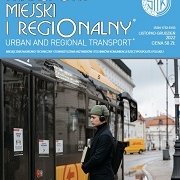 SITK
SITK 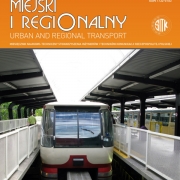 SITK RP
SITK RP 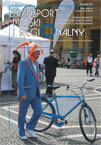 SITK RP
SITK RP 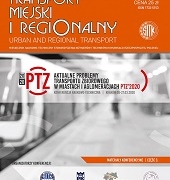
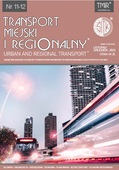 SITK
SITK 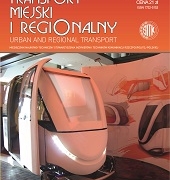

 SITK RP
SITK RP SITK RP
SITK RP